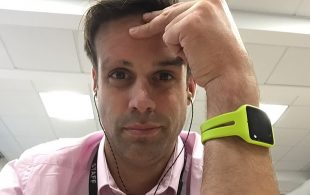Reticence to show the thinking behind complex decisions may stem from the risk of challenge, but being open enables a more educated discourse
Defra is working towards a target operating model, which frames how the Defra group (30 or so organisations) should be working together to become data-driven.
Why do we need this to be defined and written down in a model? Especially when considering that Defra is (possibly) the most data-rich department in government, with a breadth of subjects covered from plant and animal health to air quality and flooding.
You may ask: if Defra hasn't been data-driven up till now, what has all that time and energy spent on collecting and creating data been for?
Well, it’s fair to say that Defra has collected, created and used data – lots of data – through its 17-year history, and through the previous incarnations of the Department and the organisations that fall under it. You can see by the 13,000 or so published open datasets listed here.
What is different is the desire to become much more joined-up in how we use this data across the whole group.
There is a good reason why this hasn't been the case before. In the past, to manage the environment, the myriad regulations that govern how we should manage it has meant we have broken down delivery of requirements into smaller pieces. We have then given accountability to a number of organisations within the group who either are, or to differing degrees consider themselves to be, autonomous.
As a result, data that has been collected for a specific purpose – for example monitoring of air quality or collection of landfill waste data – has been collected because there is a bit of legislation that states the requirement.
What we are getting at when we say ‘data-driven’ is, for example, bringing air quality and waste data together and seeing if there is any extra understanding we can gather. Another example is movements of animals, which is information submitted to one part of Defra group, and the impact of diffuse agricultural pollution on water quality which is monitored by a different part of the group. Can both together tell us something more, or highlight discrepancies?
But it’s not just about how we use environmental data we collect more effectively. It’s more fundamental than that. It’s a change – to us being more transparent in how the data we have is driving the decisions we make.
We make significant and life-changing policies and decisions based on the data that we have. For example, when we decide to evacuate properties or introduce or operate flood defences, we need to show how the data supports our actions. This needs to be the norm rather than the exception. We want to see a data-literate public that can see how data supports decisions that we make, and is able to challenge us appropriately when necessary.
This for me is the logical end point of the journey begun with the Freedom of Information Act and the transparency push that led to the initial open data work in UK government: publish a decision and the data that supports it, and be prepared to explain your reasoning.
Easy to say? Sure! Difficult to deliver? You bet.
To do this we need to change how comfortable people are at the prospect of challenge.
I would argue that we get challenged anyway. This approach will just enable more educated discourse.


Recent Comments